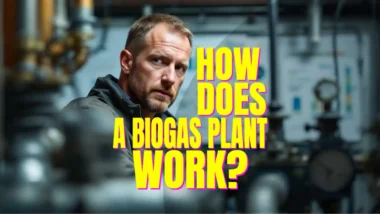“How Biogas Systems Work | American …” from americanbiogascouncil.org and used with no modifications.
Key Takeaways
- Biogas systems can significantly reduce reliance on fossil fuels by providing a renewable energy source.
- They play a crucial role in mitigating greenhouse gas emissions, helping combat climate change.
- Biogas systems offer scalable energy solutions tailored to local needs, particularly in rural areas.
- Integrating biogas into existing energy grids can enhance grid stability and reliability.
- Innovative technologies in biogas production and upgrading are driving efficiency and sustainability.
How Biogas Systems Fit into Our Energy Landscape
Imagine a world where energy is not just a commodity, but a sustainable and renewable resource available to everyone. Biogas systems are paving the way to make this vision a reality. These systems transform organic waste into a valuable energy source, contributing significantly to our renewable energy landscape.
Biogas systems are versatile. They can be tailored to meet the specific energy demands of different sectors, from electricity and heat production to transportation fuel. This adaptability makes them an integral part of our energy transition journey.
Most importantly, biogas systems serve as a bridge between traditional energy sources and a more sustainable future. By integrating them into our existing energy systems, we can reduce our dependence on fossil fuels and decrease harmful emissions.
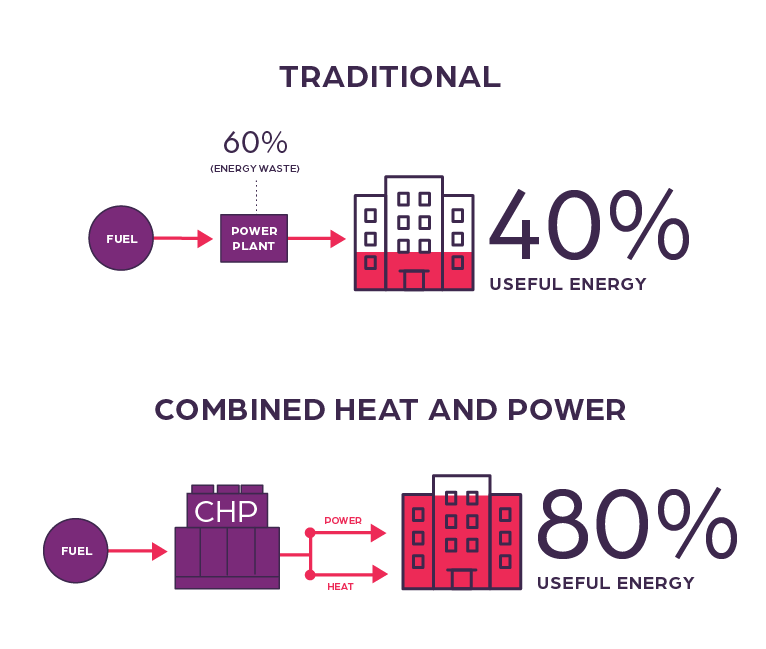
“Cordia | Solutions – Combined Heat & Power” from cordiaenergy.com and used with no modifications.
The Importance and Potential of Biogas
Biogas is more than just a renewable energy source; it's a solution to many of our environmental challenges. As we face increasing concerns about climate change, the potential of biogas becomes even more apparent. It not only helps in reducing waste but also provides a cleaner alternative to fossil fuels.
One of the most significant advantages of biogas is its ability to be produced locally. This means communities can generate their own energy, reducing the need for long-distance energy transportation and the associated losses.
Understanding the Role of Biogas in Energy Transition
The transition to renewable energy is crucial for a sustainable future, and biogas is at the forefront of this change. By converting organic waste into energy, biogas systems provide a dual benefit: waste management and energy production.
Besides that, biogas systems can be integrated into existing energy infrastructures, making the transition smoother. They can operate alongside solar and wind energy, forming part of a diversified energy portfolio that enhances energy security.
Key Factors Making Biogas a Sustainable Choice
Several factors contribute to the sustainability of biogas systems. Firstly, they utilize waste materials, reducing the burden on landfills and decreasing methane emissions from decomposing organic matter. Secondly, biogas systems produce energy with a low carbon footprint, contributing to the fight against global warming.
Moreover, biogas can be upgraded to biomethane, a high-quality gas that can replace natural gas in many applications. This versatility makes biogas a valuable component of our renewable energy mix.
“Biogas systems operate as a biological battery, coupling electricity and gas grids, using surplus electricity to produce hydrogen and react with biogenic CO2, thus increasing biomethane output.” – Innovation in Energy Systems
Advantages of Integrating Biogas into the Energy System
Integrating biogas systems into our energy infrastructure offers numerous advantages. By doing so, we can not only enhance energy security but also contribute to environmental conservation.
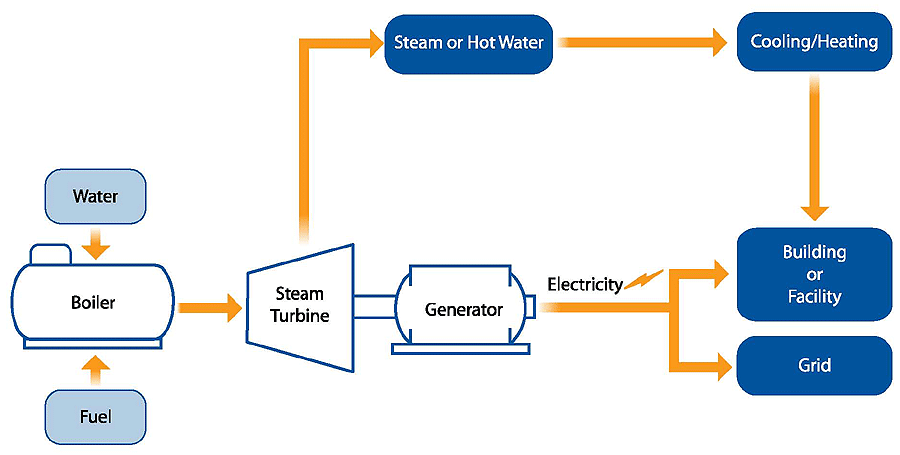
“What Is CHP? | US EPA” from www.epa.gov and used with no modifications.
Reduction in Fossil Fuel Dependence
One of the primary benefits of biogas systems is their potential to reduce our reliance on fossil fuels. By converting organic waste into energy, we can decrease the demand for coal, oil, and natural gas.
This shift is vital for a sustainable future, as it reduces greenhouse gas emissions and lessens the environmental impact of energy production.
Mitigating Greenhouse Gas Emissions
Biogas systems play a significant role in mitigating greenhouse gas emissions. By capturing methane from organic waste, they prevent this potent greenhouse gas from entering the atmosphere.
- Methane is approximately 25 times more effective than CO2 at trapping heat in the atmosphere.
- Biogas systems help convert this methane into energy, reducing its environmental impact.
Therefore, biogas systems are an effective tool in the fight against climate change. For more information, you can explore the technical aspects of flexible plant operation.
Providing Local Energy Solutions in Rural Areas
Biogas systems offer a unique advantage for rural areas, where access to centralized energy grids may be limited. By producing energy locally, communities can become more self-sufficient and less reliant on external energy sources.
This not only enhances energy security but also stimulates local economies by creating jobs and encouraging sustainable practices.
Technological Aspects of Biogas System Integration
As we delve into the technological aspects of biogas systems, it's essential to understand the processes involved in their integration into the energy system. From production to upgrading, each step plays a crucial role in maximizing the efficiency and sustainability of biogas systems.
Biogas Production and Upgrading
The production of biogas involves the anaerobic digestion of organic materials, such as agricultural waste, manure, and food scraps. This process results in a mixture of methane and carbon dioxide, which can be used as a renewable energy source.
Upgrading biogas to biomethane involves removing impurities, such as carbon dioxide and hydrogen sulfide, to produce a high-quality gas suitable for use in natural gas applications. This upgrading process is vital for expanding the use of biogas beyond electricity and heat production to include transportation and industrial applications.
Cooperation with Electricity and Gas Grids
Biogas systems are unique because they can seamlessly integrate with both electricity and gas grids. This integration allows for a more balanced energy supply, ensuring that energy demands are met efficiently and sustainably.
Biogas inputs to the grid are dispersed and because the distance of travel of the electricity or gas to the consumer is more local the energy losses-route to the customer are lower and infrastructure requirements are minimised. This aspect of biogas is a benefit seldom considered when weighing up the advantages of his energy source, and it should be given more weight than is currently provided.
Biogas systems can act as a ‘biological battery,' storing energy in the form of methane that can be released when needed. This capability is especially beneficial in balancing the intermittent nature of renewable sources like wind and solar.
Moreover, the flexibility of biogas systems enables them to support grid stability.
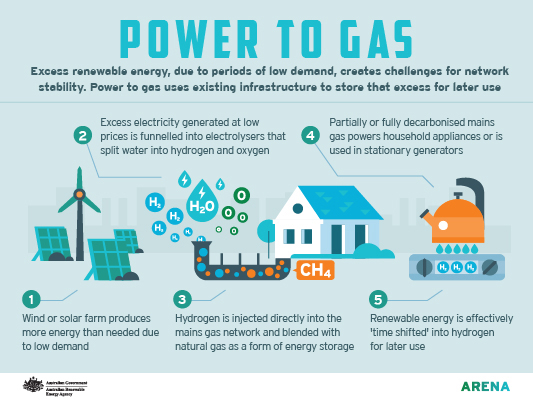
“How to convert electricity to hydrogen …” from arena.gov.au and used with no modifications.
During periods of low electricity demand, excess energy can be used to produce hydrogen, which reacts with biogenic CO2 to enhance biomethane output. This not only optimizes energy use but also contributes to reducing carbon emissions.
Innovations and Emerging Technologies
The field of biogas is continuously evolving, with new technologies enhancing efficiency and sustainability. One such innovation is the use of advanced digesters that improve the breakdown of organic materials, resulting in higher biogas yields. Additionally, research into microbial communities is leading to more efficient digestion processes.
Emerging technologies also focus on biogas upgrading. Techniques like pressure swing adsorption and membrane separation are becoming more efficient, allowing for the production of high-purity biomethane. These advancements are crucial for expanding the applications of biogas and integrating it more fully into existing energy systems.
Challenges and Considerations
One major consideration in biogas systems is the technical and economic barrier that can hinder the development of biogas systems. These include the high initial costs of setting up biogas plants and the technical expertise required for operation and maintenance.
Technical and Economic Barriers
Another challenge lies in the regulatory and policy frameworks governing biogas systems. Policies need to support the development and integration of biogas into the energy system, providing incentives for investment and innovation. Additionally, technical expertise is necessary to ensure efficient operation, which can be a challenge in regions with limited access to skilled professionals.
Regulatory and Policy Frameworks
Regulatory and policy frameworks play a crucial role in the success of biogas systems. Supportive policies can encourage investment and innovation, while restrictive regulations can hinder development. It's essential for policymakers to create an environment that fosters the growth of biogas systems, providing incentives for research, development, and implementation.
Furthermore, clear guidelines and standards are necessary to ensure the safe and efficient operation of biogas systems. These regulations should address environmental concerns, such as emissions and waste management, to ensure that biogas systems contribute positively to sustainability goals.
Public Awareness and Acceptance
Public awareness and acceptance are vital for the widespread adoption of biogas systems. Many people are unaware of the benefits of biogas and how it can contribute to a sustainable energy future. Education and outreach programs can help raise awareness, highlighting the environmental and economic advantages of biogas systems.
Moreover, involving communities in the development and implementation of biogas projects can foster acceptance and support. By demonstrating the tangible benefits of biogas systems, such as reduced energy costs and improved waste management, communities are more likely to embrace this renewable energy source.
Successful Cases of Biogas Integration
Across the globe, numerous successful cases of biogas integration showcase the potential of this renewable energy source. These examples highlight the diverse applications of biogas systems and the benefits they bring to communities and industries.
In Germany, biogas systems are a key component of the country's renewable energy strategy. The widespread adoption of biogas has contributed to significant reductions in greenhouse gas emissions and increased energy security.
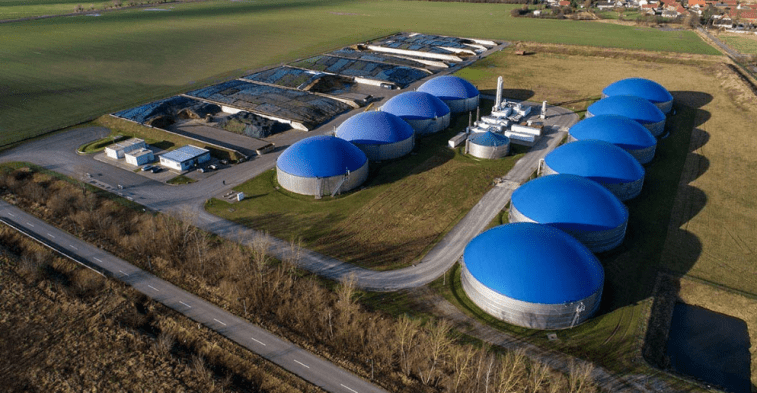
“Biogas Specialist WELTEC BIOPOWER …” from www.globaltrademag.com and used with no modifications.
Notable Global Examples
One notable example is the city of Linköping in Sweden, where biogas produced from organic waste powers the city's public transportation system. This initiative has not only reduced emissions but also improved air quality and reduced reliance on fossil fuels.
Another example is in India, where small-scale biogas systems provide rural communities with a reliable energy source for cooking and heating. These systems have improved the quality of life for many families, reducing indoor air pollution and decreasing deforestation.
- Linköping, Sweden: Biogas powers public transport, reducing emissions and fossil fuel dependence.
- India: Small-scale biogas systems provide rural communities with clean energy for cooking and heating.
- Germany: Biogas is a key part of the renewable energy strategy, reducing greenhouse gas emissions.
These examples demonstrate the versatility and potential of biogas systems in different contexts, from urban to rural settings.
Lessons Learned from Real-World Applications
Real-world applications of biogas systems provide valuable insights into their implementation and impact. One key lesson is the importance of tailoring biogas systems to the specific needs and resources of a community or industry. By considering local conditions and available materials, biogas systems can be optimized for efficiency and sustainability. For example, using environmentally responsible food waste depackagers can enhance the sustainability of biogas production.
Another lesson is the value of collaboration and partnerships. Successful biogas projects often involve cooperation between governments, businesses, and communities, leveraging resources and expertise to achieve common goals. For instance, exploring zero waste companies can provide insights into effective waste management strategies.
Future Prospects for Biogas Systems
The future of biogas systems is promising, with numerous opportunities for growth and innovation. As technology advances and awareness increases, biogas is set to play an even more significant role in our energy landscape.
Innovative Applications and Trends
Innovative applications of biogas systems are emerging, expanding their potential uses and benefits. One trend is the use of biogas in the transportation sector, where it can replace fossil fuels in vehicles, reducing emissions and improving air quality. For those interested in sustainable practices, exploring zero waste kits can complement the environmental benefits of biogas systems.
Another trend is the integration of biogas systems into circular economy frameworks, where waste is seen as a resource rather than a problem. By using organic waste to produce energy, biogas systems contribute to a more sustainable and efficient use of resources.
As we look to the future, biogas systems hold the promise of a cleaner, more sustainable energy future, benefiting both people and the planet.
The Role of Biogas in Decarbonizing Transport
Biogas is emerging as a powerful tool in the effort to decarbonize transport. As a renewable energy source, it offers a sustainable alternative to fossil fuels, which are a major contributor to greenhouse gas emissions in the transport sector. By converting organic waste into biomethane, biogas can be used to fuel vehicles, significantly reducing their carbon footprint.
In countries like Sweden, biogas is already being used to power public buses, providing a cleaner and more sustainable mode of transportation. This not only helps reduce emissions but also enhances energy security by decreasing reliance on imported fossil fuels.
Moreover, the use of biogas in transport can drive economic growth by creating jobs in the biogas production and distribution sectors. As the demand for renewable fuels increases, so does the potential for economic development in regions investing in biogas infrastructure.
Opportunities in Circular Economy Frameworks
Biogas systems fit seamlessly into circular economy frameworks, where waste is transformed into valuable resources. By utilizing organic waste to produce energy, biogas systems close the loop on waste management, turning what would be discarded into a renewable energy source.
This approach not only reduces the environmental impact of waste but also provides a sustainable energy solution that supports economic growth. By integrating biogas systems into circular economy models, communities can achieve greater resource efficiency and environmental sustainability.
Conclusion and Reflections
As we reflect on the integration of biogas systems into the energy system, it becomes clear that biogas is a versatile and sustainable energy solution. By converting waste into energy, biogas systems address multiple environmental challenges while providing a renewable energy source.
Summary of Key Insights
Biogas systems offer numerous benefits, including reducing reliance on fossil fuels, mitigating greenhouse gas emissions, and providing local energy solutions. Their integration into existing energy grids enhances grid stability and reliability, while innovative technologies continue to drive efficiency and sustainability. For more insights, explore this infographic on carbon footprint.
By investing in biogas infrastructure and supporting research and innovation, we can unlock the full potential of biogas systems, paving the way for a more sustainable and resilient energy system.
Frequently Asked Questions
Biogas systems are a topic of growing interest, and many people have questions about their potential and applications. Here, we address some of the most common inquiries about biogas systems.
From understanding how biogas differs from natural gas to exploring its implementation in urban areas, these FAQs provide valuable insights into the world of biogas. For those interested in waste management aspects, you might also want to explore waste management in retail stores and its connection to sustainable energy solutions.
1. How does biogas differ from natural gas?
Biogas and natural gas are similar in that they both contain methane, but their origins are quite different. Biogas is produced from the anaerobic digestion of organic materials, such as agricultural waste, manure, and food scraps, making it a renewable energy source.
In contrast, natural gas is a fossil fuel extracted from underground reserves. While both gases can be used for similar applications, biogas is considered more sustainable due to its renewable nature.
“Biogas systems convert waste into a renewable energy source, offering a sustainable alternative to fossil fuels like natural gas.” – Renewable Energy Insights
By upgrading biogas to biomethane, it can be used interchangeably with natural gas, providing a cleaner energy option.
2. Can biogas systems be implemented in urban areas?
Yes, biogas systems can be implemented in urban areas, although they are more commonly found in rural settings. In urban areas, biogas systems can be integrated into waste management infrastructure, converting organic waste from households, restaurants, and businesses into energy.
This not only helps manage waste but also provides a local energy source, reducing the need for long-distance energy transportation and its associated emissions.
3. What are the main sources for biogas production?
The primary sources for biogas production include agricultural waste, manure, food scraps, and sewage sludge. These organic materials are rich in nutrients and provide an ideal environment for the anaerobic bacteria responsible for biogas production. For more information on managing food waste, check out environmentally responsible food waste solutions.
By utilizing these waste materials, biogas systems offer a sustainable solution for waste management while producing renewable energy.
4. How does biogas generation impact waste management?
Biogas generation has a significant positive impact on waste management. By converting organic waste into energy, biogas systems reduce the volume of waste sent to landfills, decreasing methane emissions from decomposing waste.
- Reduces landfill waste
- Decreases methane emissions
- Provides a renewable energy source
Moreover, the byproduct of biogas production, known as digestate, can be used as a nutrient-rich fertilizer, closing the loop on waste management and supporting sustainable agriculture.
Therefore, biogas systems offer a comprehensive solution for waste management, turning waste into a valuable resource.
5. What technologies are vital for upgrading biogas quality?
Several technologies are essential for upgrading biogas quality, including pressure swing adsorption, membrane separation, and water scrubbing. These processes remove impurities such as carbon dioxide and hydrogen sulfide, producing high-purity biomethane. For more on sustainable practices, explore this zero waste to landfill initiative.
“Advanced technologies like pressure swing adsorption and membrane separation are crucial for upgrading biogas to high-quality biomethane.” – Biogas Technology Review
By upgrading biogas, it can be used in applications that require high-quality gas, such as transportation and industrial processes, expanding the potential uses of biogas systems.
As technology continues to advance, these upgrading processes are becoming more efficient, driving the widespread adoption of biogas systems.
In conclusion, biogas systems represent a powerful tool in the transition to renewable energy.
Integrating biogas systems into the energy system can significantly reduce the carbon footprint of a community. By utilizing organic waste materials, biogas systems convert waste into a renewable energy source, thus promoting sustainability. For more information on how to minimize environmental impact, check out this infographic on carbon footprint.




